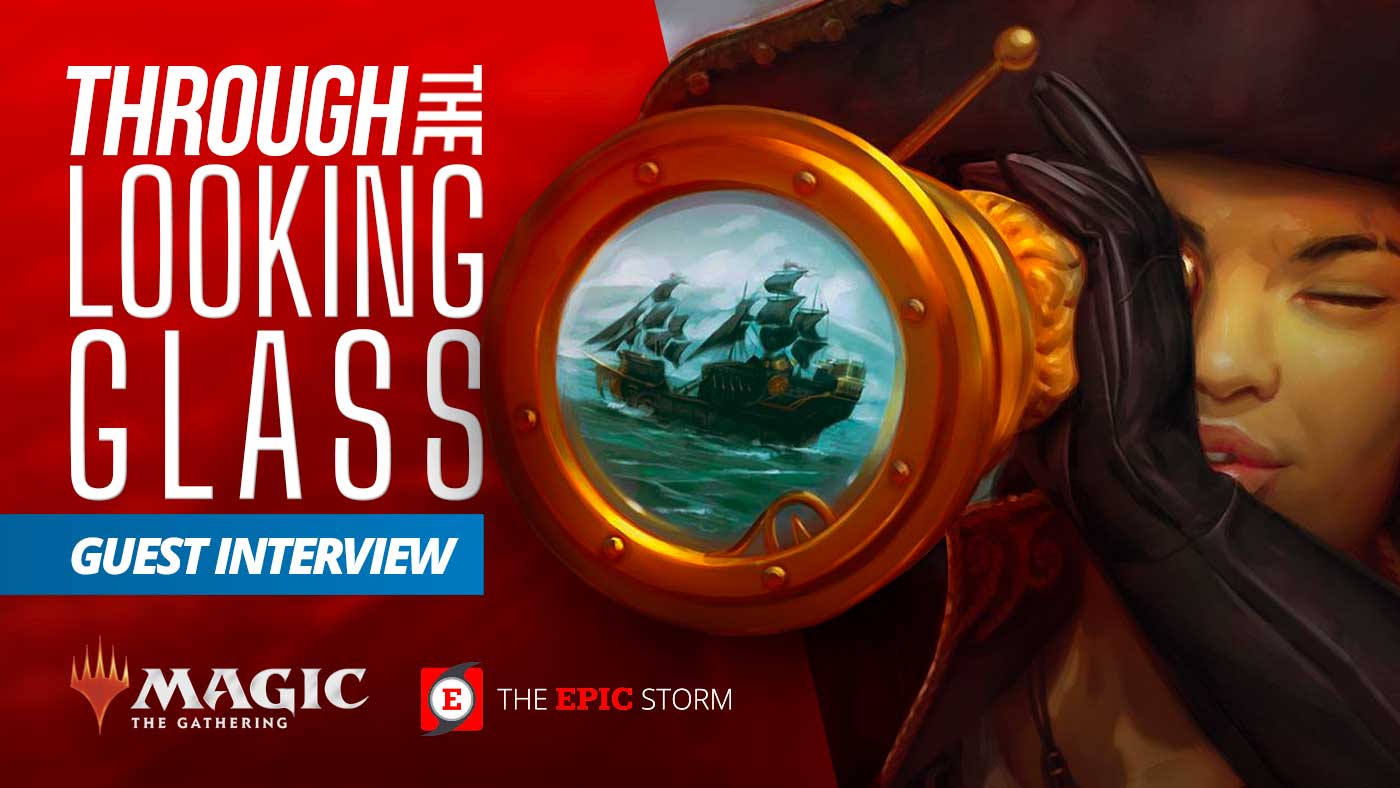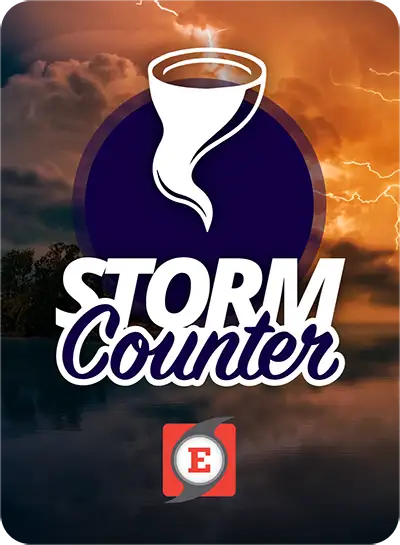
Special Guest
A few words on Stefan Stasiak
Stefan Stasiak is a psychology student at the University of Ottawa and spends a lot of time preparing to enter graduate psychology programs in addition to playing paper Magic and MTGO. He started playing Magic at a young age in 2000, around the release of Invasion block, enjoying primarily limited before starting to investigate the Legacy scene in Montreal in 2016. Particularly fascinated with “engine” and value strategies, he discovered the Aluren archetype and quickly latched onto the deck before embracing the more competitive aspect of Legacy in 2019. In addition to a number of 5-0 finishes on MTGO, Stefan also regularly competes in MTG Paper Legacy Discord seasons. Finishing well enough to qualify for the first three seasonal invitational, double-elimination events, Stefan reached a first-place finish in the October 2020 Invitational and fifth place in the February 2021 Invitational.
I actually think that [[Yorion, Sky Nomad]] [[Aluren]] decks are putting themselves in a disadvantaged position by masquerading as Death & Taxes for a counterintuitive reason. [[Aluren]] as a deck generates a lot of value and can apply pressure to Storm decks, while having access to the combo, so TES generally loses these games that go past turn three as [[Aluren]] gets the train rolling before closing out the game. Conversely, TES has the ability to be more explosive if it wants to, especially if it doesn’t care about protection and can catch [[Aluren]] with its proverbial pants down in the first two turns. These are the games that [[Aluren]] generally loses to TES. Interestingly enough, these are the hands that you might be inclined to keep against DnT, so I think that keeping these fast hands, and just jamming your combo as TES actually gives them the leg up in this situation.
Another noteworthy thing about the [[Yorion, Sky Nomad]] builds is that you are simply playing an 80-card combo deck and your opponent is not. While playing [[Yorion, Sky Nomad]] gives you a significant bump in average card quality to play more FIRE U/G cards, it comes with a significant disadvantage in consistency. As a 60-card deck (which I personally prefer), it is quite possible to just be the first to combo successfully if you have some interaction, whereas it is much more difficult to find the right mix of cards to do that in an 80-card build.
There are a lot of cards to talk about here, most of which are marginal upgrades or side options like [[Ice-fang Coatl]] and [[Endurance]]. These types of cards add up and add a lot to the deck’s power for certain matchups. Since there are so many and since they are by and large just small improvements that are nice to have, I will not talk about them here, and instead focus on the big name cards.
I’ll start by talking with the clear winner of the big-name cards, and it is without a doubt, [[Uro, Titan of Nature’s Wrath]]. This card simply does everything the deck wants to do on a single piece of cardboard. It ramps, it draws cards, it acts as a combo piece, it buys you time, it draws you into the combo, it acts as a threat, and it can win the game all by itself outside the context of the combo. Every single thing this card does is relevant to what [[Aluren]] wants to be doing.
Contrast this with a card like [[Oko,Thief of Crowns]] who, while powerful enough to be banned in Legacy, simply just doesn’t fit your game plan. [[Oko, Thief of Crowns]] wins games, but it doesn’t mesh with the rest of your deck, whereas [[Uro, Titan of Nature’s Wrath]] does this exceptionally well.]]
The printing of [[Uro, Titan of Nature’s Wrath]] makes [[Aluren]] able to go toe-to-toe with almost every fair-based strategy in Legacy from a fair-deck perspective alone. Even before bringing in the combo, it has enough to beat decks like Miracles and Delver without ever needing to combo. The fact that it boosts [[Aluren]]’s fair gameplan so much can often make opposing fair decks feel very disadvantaged, because they have to stop a deck that is attacking from two angles at once – fair and unfair – in ways that are complementary to each other.
As for [[Acererak the Archlich]], I am going to say something contentious – I think this card is overhyped and overplayed. This card was touted as a two-card combo with [[Aluren]] – which, while being true – has been true for as long as the archetype has existed with [[Imperial Recruiter]] and [[Recruiter of the Guard]]. For those unfamiliar with the nuance of these cards, a single Recruiter with [[Aluren]] is enough to play your entire deck in a myriad of different ways, with different sequencing options available to play around almost any number of different board states and interaction.
[[Acererak the Archlich]], however, is inflexible and much easier to interact with. He can be stopped by a single piece of removal at the correct time, whereas a correctly-executed recruiter loop with practically any other combo-relevant piece in hand or on board can play through 3-6 pieces of non-counterspell interaction without having the combo fail.
The question then becomes, “why is [[Acererak the Archlich]] played?” There are two reasons, one of which is straightforward, and the other is more complex, and leads into the next part of the question. The first is simply because three-color variants of the deck that cannot play either Recruiter have had to rely on a three-card combo ([[Aluren]] + [[Cavern Harpy]] + U/B creature). [[Acererak the Archlich]] gives these strictly BUG variants of the deck a two-card combo to utilize, and for that, it is a definite reason to be included in these variants, especially with the [[Living Wish]] package.
The second reason dips its toe into why some notable cards have been removed. [[Acererak the Archlich]] is a leaner combo package, not requiring cards like [[Cavern Harpy]], [[Parasitic Strix]] or [[Ukkima, Stalking Shadow]] and a blue bounce creature for Recruiter loops (usually [[Arctic Merfolk]]).
The argument for playing [[Acererak the Archlich]] instead of these cards is that it cuts down on “dead” or “bad” cards, making the combo package more streamlined. I tend to believe that the opposite is actually true, however.
[[Acererak the Archlich]], outside of the combo context is generally paying three mana to scry one, is not a creature that sticks on the table and must be cast while [[Aluren]] is in play to be effective. This is often the perceived situation with many of the loop or weaker individual cards in the Recruiter or [[Cavern Harpy]] combo, but the reality is that many of these cards can be effectively played in a fair midrange manner and be effective. This is a mistake that I see a lot of new [[Aluren]] players make; they are under the impression that these small, value plays are not good enough for Legacy, when the opposite is actually true. Lots of these little value plays that put creatures on the table and generate value are actually very powerful in Legacy, and are the backbone of decks like Death and Taxes and Esper Vial.
Random evasive 2/2s or 2/2s that bounce a creature are powerful enough to impact games enough in Legacy, and even though it may not appear as such at first glance, this can be the difference between winning and losing games. These are things that [[Acererak the Archlich]] simply cannot do compared to a correctly piloted [[Aluren]] deck, especially when compared to a card like Recruiter, which is almost generally a strictly better card both inside and outside of the combo context. This becomes extremely apparent in an [[Aluren]] mirror match where one player is playing [[Acererak the Archlich]] and the other is not; the player that is playing Recruiter or [[Cavern Harpy]] generally has the options to run circles around the [[Acererak the Archlich]] player.
Overall, I think [[Acererak the Archlich]] sees a lot of play because of the tendency for players to prefer leaner and more streamlined decklists. While this is generally correct for most archetypes, I think this is actually unwise for a deck like [[Aluren]], whose strength is its flexibility and its redundancy. As paper play begins to return, you are starting to see this pattern be reflected in major paper tournaments, where the variants of [[Aluren]] with more flexible, varied combo loops are outperforming decklists with narrower loops.
I think acceleration in a lot of the combo matchups is essential. Being able to race TES with a little bit of acceleration can put a lot of pressure on the TES player, so I think these kind of cards are important. Personally, I prefer a package of [[Veteran Explorer]] and [[Cabal Therapy]], but mana dorks are excellent in this situation as well.
Whether you have [[Prismatic Ending]] or [[Abrupt Decay]], I’m not too keen in general on keeping removal in the deck outside of game one in the TES matchup. I think a combination of a hate bear like [[Meddling Mage]] or [[Collector Ouphe]] plus discard or Force to protect it is much better. I think the [[Aluren]] player wants to keep hands that either win the game as soon as possible in this matchup or a hand that stops the TES player and is capable of pressuring their life total. I’m not sure removal is really what you want to be doing as the [[Aluren]] player.
I am generally not worried about Empty the Warrens at all, since it does not kill me on the same turn. If the TES player expends a bunch of resources only to pass the turn, that gives me the green light to just go all in on the combo and ignore disruption. This often ends in a loss for the TES player, since four-color can easily win on the next turn, and the [[Living Wish]] variants can easily grab a [[Plague Engineer]] to shut it all down. I’d be relieved to see the TES player expend resources on something like [[Empty the Warrens]] rather than wait for [[Tendrils of Agony]]/[[Grapeshot]].
The [[Living Wish]] package is pretty common at this point, and the versions that aren’t are probably playing a Recruiter package, which serves almost the same function. I think the TES player definitely has to be aware that the [[Aluren]] player may bring in a silver bullet either from the mainboard or sideboard. Note that the Recruiter players may be playing some or all of these creatures in the main deck, so it is entirely possible to face off against some sort of strange Esper Vial/[[Aluren]] hybrid combo deck in game two.
I think the targets the TES player should be most wary of are [[Meddling Mage]] and [[Collector Ouphe]], and occasionally [[Leovold, Emissary of Trest]] or [[Hullbreacher]]. Another thing that may come up is that some of the [[Living Wish]] variants play a [[Wasteland]] in their sideboard as a wish target, so that may throw people off.
I am actually very concerned about this card, and I think it shifts the matchup a lot, giving the TES player the ability to defend their combo or even just buy a turn. Before TES had started including [[Orim’s Chant]] recently, I found the matchup to not be too difficult with my four-color Recruiter [[Aluren]] build with [[Cabal Therapy]]. Now, I find it significantly more challenging, and I think the matchup spread is closer to 50/50 now with [[Orim’s Chant]] in the mix.
I think TES fares pretty well against [[Aluren]], especially compared to ANT. I personally find the ANT matchup to not be too difficult, especially with [[Meddling Mage]] in my 75. Since TES is an inherently more flexible deck, I think it is a lot harder to stop, and it is a lot less reliant on its life total. With [[Orim’s Chant]] being a mainstay in TES now, I would say the matchup is pretty close these days. [[Doomsday]] is probably [[Aluren]]’s worst matchup among top-tier decks by a large margin, but I suspect [[Doomsday]] is actually just too powerful a shell for the format and is being kept under control by the prevalence of Delver.
I think [[Aluren]] will want to board out all or almost all of its removal and a few of the creatures dedicated for fair matchups, and focus on cheap interaction and cards that win the game quickly. I personally bring in two [[Meddling Mage]], 1-2 [[Veil of Summer]] (depending on how many are in my list), and all my extra Force effects. Depending on the particular list I’m running, I would bring in extra hate pieces such as [[Collector Ouphe]] or [[Deafening Silence]].
This gets a little more complicated when you consider wish variants, but they are basically playing the same gameplan as Recruiter builds with a different card (minus the 1/1 body).
Since my lists play [[Cabal Therapy]] main deck, which is a very powerful card in this matchup, I would expect to see other [[Aluren]] builds bring in some discard. The idea of this sideboard plan is to focus on having cheap interaction and lock pieces from turns 1-3 to slow TES’ explosiveness down, and then turning the game around and winning on turn 3-4.
I think [[Surgical Extraction]] is pretty good, and I have played that in the past. Graveyard hate like [[Nihil Spellbomb]], [[Endurance]] and the like isn’t all that important. If you’re really light on relevant cards and are on a [[Yorion, Sky Nomad]] build, it is something to consider. Unless you have absolutely nothing else to go in, I don’t think it’s worth it.
I expect to see some instant-speed creature removal (probably [[Abrupt Decay]]), and maybe something like [[Chain of Vapor]] or [[Echoing Truth]]. The removal is not particularly strong against stopping the Recruiter combo, but it is serviceable against [[Acererak the Archlich]]. The removal is very good at stopping the hate bears and lock pieces, though.
While [[Galvanic Relay]] is a card that may let the TES player pop off early, I think it is a little risky, mostly because it reveals cards against a deck full of silver bullets and passes the turn against a deck that can win out of nowhere. I think going clean, fast, and straightforward is probably the approach the TES player should take.
I think this is actually a very interesting question, because I think the answer is the same for both. In combo matchups, opposing combo decks occasionally make the mistake of playing not to lose, or playing safe, rather than trying to win.
A lot of [[Aluren]] players underestimate their deck’s ability (depending on build, understandably) to be able to just combo off first, and may overboard as a result. Lots of little things can buy you time in this matchup, and time is really the only thing [[Aluren]] needs to get the win in most matchups. It is much better to just win quickly.
For TES players, I see them sometimes make the mistake of trying to hold up interaction to stop [[Aluren]]’s combo. Even against the most easily-disrupted loops, the likelihood of a deck like TES successfully stopping the combo is quite low. It is much better to try to win the game as fast as possible, even if it means making “unsafe” plays. [[Aluren]]’s defenses are usually at their weakest in the first few turns, and that is when the TES player should go for it. Waiting any longer just makes it less and less likely to succeed.
I’d like to thank you for inviting me to share my thoughts here. [[Aluren]] is probably a commonly-misunderstood deck, and the power ceiling of the deck is very, very high if the pilot is experienced. It’s a super fun and powerful deck to try, and there are always new things to learn and master. I’d also like to give a shoutout to the MTG Paper Legacy Discord (https://www.twitch.tv/mtgpaperlegacy) where I got a lot of my start and practice in getting quite good at the deck. I’d like to give another shoutout to the phenomenal [[Aluren]] player Otaba, wherever they are right now.










